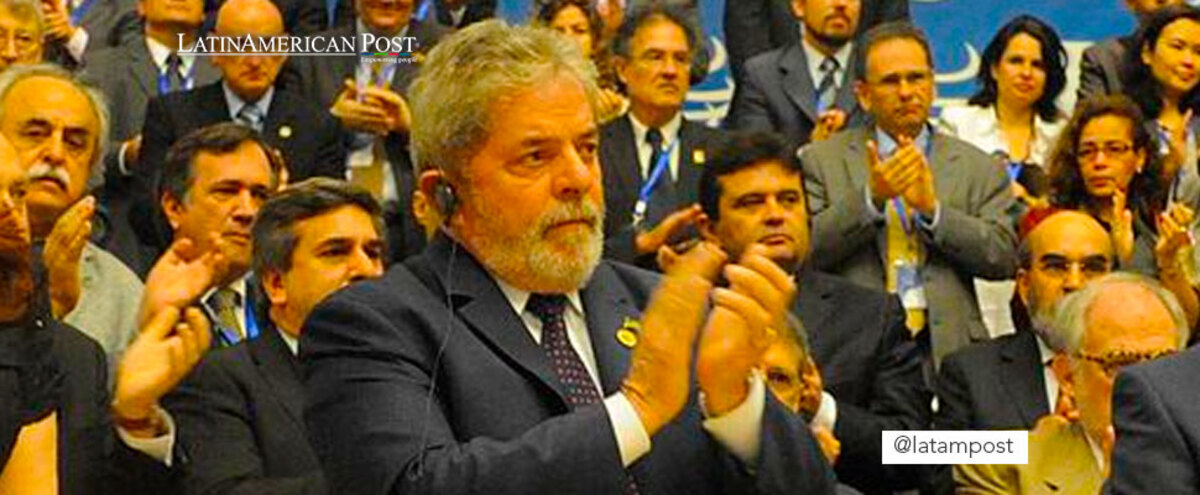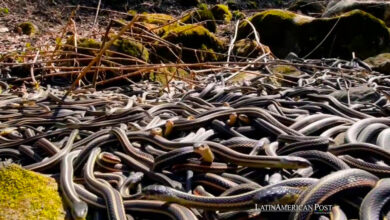The Brazilian president, Luiz Inacio Lula da Silva, will have to choose what kind of position he will take in the Latin American context. You will choose your old allies or look at the new cool friends of the hemisphere

Photo: Argentine Presidency
LatinAmerican Post | Santiago Gómez Hernández
Escucha este artículo
Leer en español: Lula da Silva y el dilema del pasado o el presente
Since January 1, Brazil has had a turbulent political life. With even a takeover of the buildings of Brazilian power (Parliament, presidential palace, and Supreme Court). This has left a recently inaugurated Lula focused on internal politics, for which reason he has given little information about what Lula's role will be in Latin America, the region that he already led in his first terms and in which today he can once again play a role. determining role.
Since his most recent presidential campaign, Lula has maintained his intention to return to work on regional integration. He has highlighted the role of CELAC and UNASUR, as well as resuming his focus on the BRICS and South-South cooperation, mainly between Latin America and Africa.
A Very Integrated Past
At the time, Lula was a president who put Brazil on the world front pages. His integration and his role as a founding member of the BRICS group (a union of countries that sought to counterweight the G-7 and the Western powers) magnified the figure of the Brazilian leader throughout the region. A man who understood Latin American integration as a duty and a natural path for Brazil, the main economic power in the area.
You can also read: Does the ELN lose the political argument?: This is how the dialogues with the Government of Gustavo Petro are going
In the first two presidential terms of Lula da Silva, he stood out as one of the main leaders of South America. He was one of the main promoters of Latin-American integration. Being president of the regional superpower at a time when he shared with Hugo Chávez, Daniel Ortega, Fidel Castro, Rafael Correa, Evo Morales, Néstor Kirchner, Cristina Fernández, Álvaro Uribe, Vicente Fox, Felipe Calderón, Sebastián Piñera among others. Lula worked as a bridge and mediator.
His role was that of a leader and one that could be heard by both sectors of the political spectrum. Despite his past as a trade unionist and being the strong man of the Workers' Party, with a clear socialist tendency, Lula was always considered a moderate on the Latin American scene.
Today reality is other. Latin America seems to have swung completely to the left and Lula has to find his place on the political map again. This position will be important to be able to understand the role that the Brazilian will once again have, after years in which the Rio de Janeiro country has lost both regional and global relevance.
The Two Lefts That Lula Can Choose
Today we see a red Latin America, with a majority of communist, socialist or left-leaning presidents. For many, it will be a single-color map. However, if you look closely, there are different political overtones and there is a clear division of country groups on the socialist side. For one sector, there is the left of the 21st century, that left that "Hugo Chávez founded" and has some precepts that vary from the beginning of the century. But today there is also another left, which could be considered a progressive left, with a relevant influence of post-Marxist currents that today occupy the main political debates in the world. An ecological left, feminist, and focused on liberal rights. Even, for many, a more social democratic left, more moderate (in some cases).
On the one hand, there are old acquaintances. Whether it is the Castroism of Miguel Díaz-Canel, or the Chavismo of Nicolás Maduro, the Andinism of Daniel Ortega, or the Kirchnerism that is still in force in Argentina. However, within these movements, there is a clear closeness and flirtation with dictatorships. Not for nothing, Nicaragua, Cuba, and Venezuela are considered by various international organizations as the countries with the worst democratic rates in the entire region.
Many may even be former allies of Lula in his early terms. But times have changed and before, neither Venezuela nor Nicaragua was considered anti-democratic regimes. Today reality has shown that the political persecution against opponents in those countries exposes the governments.
Now, the "millennial" left of Gabriel Boric and Gustavo Petro has a distant position from the rest. Their feminist and environmentalist policies and discourses show a clear distance from other governments. Similarly, they also defend democratic institutions and even strongly criticize socialist regimes in the region. For example, Gabriel Boric, Chilean president, has denounced the lack of democracy in Nicaragua and Venezuela, which has led to criticism from these governments. And even, to Colombia and Venezuela, the Spanish government of Pedro Sánchez could be added.
What Has Lula Demonstrated?
Lula is an unconventional president and one who cannot be fitted into a preconceived mold. For now, he has made it clear that within his government plan, he does not rule out mining and oil exploitation as a source of income, positions that are far removed from those put forward by Gustavo Petro, who seeks a change in the economic model in Colombia, which, for example, wants to change the country as an economy dependent on oil and to be an agro-industrial powerhouse.
But still, Lula has been clear that he does not seek to align himself with the most radical currents on the left. A clear example of this is the choice of Geraldo Alckmin of the Brazilian Socialist Party as his vice-presidential formula. Alckmin is a recognized moderate politician in internal politics in Brazil.





